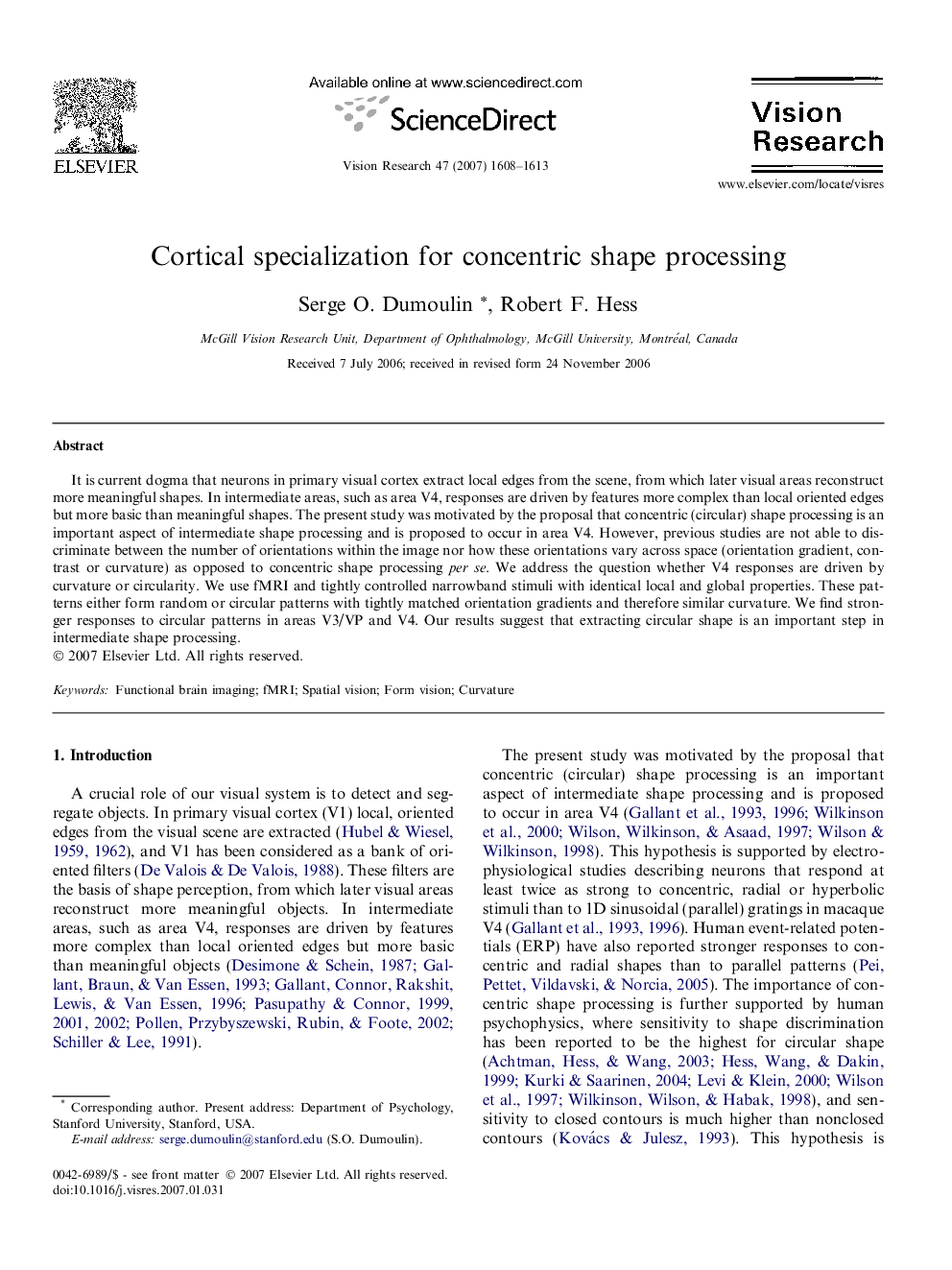| Article ID | Journal | Published Year | Pages | File Type |
|---|---|---|---|---|
| 4035691 | Vision Research | 2007 | 6 Pages |
It is current dogma that neurons in primary visual cortex extract local edges from the scene, from which later visual areas reconstruct more meaningful shapes. In intermediate areas, such as area V4, responses are driven by features more complex than local oriented edges but more basic than meaningful shapes. The present study was motivated by the proposal that concentric (circular) shape processing is an important aspect of intermediate shape processing and is proposed to occur in area V4. However, previous studies are not able to discriminate between the number of orientations within the image nor how these orientations vary across space (orientation gradient, contrast or curvature) as opposed to concentric shape processing per se. We address the question whether V4 responses are driven by curvature or circularity. We use fMRI and tightly controlled narrowband stimuli with identical local and global properties. These patterns either form random or circular patterns with tightly matched orientation gradients and therefore similar curvature. We find stronger responses to circular patterns in areas V3/VP and V4. Our results suggest that extracting circular shape is an important step in intermediate shape processing.
